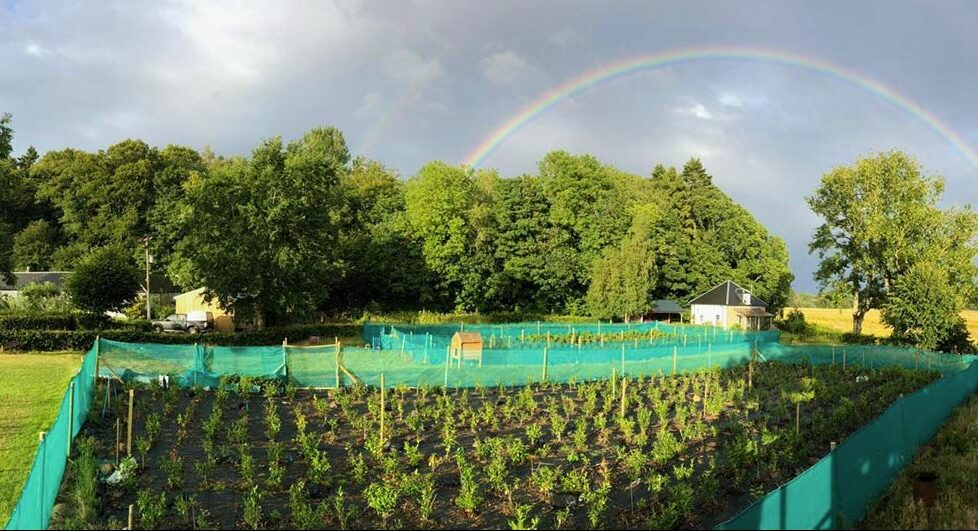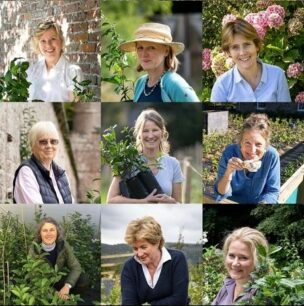Tea Tales From Tea Gardens Of Scotland

We chat to Pinkie Methven, one of the ‘nine ladies’ growing 100% Scottish tea as part of a powerful collective…
Why tea?
It was just a challenge, really. We’ve all had our first careers and we were at that stage in life where we wanted something different. Growing our own tea ticked a lot of boxes for us. Personally, I love all the countries that tea comes from, and I initially thought it might be a good excuse for a holiday that I could call research. But it’s become so much more than that. It’s become a completely new way of life. It’s provided us all a new focus and adventure, which has been wonderful. We’ve become very cohesive having swapped stories and tips.
How did it all start?
Back in 2016, Susie Walker-Munro was already growing some tea in a poly tunnel and she wanted to expand! She ended up recruiting another eight of us and we all began growing tea together. We planted something like 41,000 tea seeds in big glass houses and amazingly nearly all grew. We’ve all got different sized gardens, so some people took thousands of plants, while others took hundreds. The first year we planted in our own grounds, the beast from the east came so we lost lots, but that sorted the strong from the weak. Being based across Perthshire, Fife and Angus, each of our microclimates is different. My garden is St Martins Tea Garden in Perthshire. We’ve all sort of done our own separate things and we enjoy bouncing ideas off each other.
Tea loves our acidic soil and our long hours of daylight in the summer.
Where did you go to produce the tea?
Beverly Wainwright set up The Scottish Tea Factory. We all plucked on the same day, pulled our leaves together and took them to the factory – making our tea made from a combined crop. Our first tea is called Nine Ladies Dancing and it was quite sought after, which was fantastic. One of the girls now does her own tea, which is called Kinnettles Gold. And one of our Perthshire ladies does a roasted green tea called Frisky Rascal, which is named after a rescue red squirrel.
What issues does growing tea in Scotland present?
Scotland is the most northerly country that grows tea. Tea loves our acidic soil and our long hours of daylight in the summer. But because of our seasonal weather pattern, from about October until April/May the tea plant is dormant. It’s just coming out of dormancy now and we have a huge amount of formative pruning to do. We’re still trying to make our hedges larger. You aim for a long hedge with lots of different points to pluck form, but we have a few years before it’s like that. The plants have been in the ground for seven years now, and we’re still shaping them. In hotter climates, tea bushes grow quickly. Here, we have such a short plucking and growing season that our harvest is very small and our growth isn’t as much. That’s a big challenge.

The nine ladies of Tea Gardens Of Scotland
Do you get different results from growing tea in Scotland?
All sorts of things give your tea different flavours and notes. It’s a bit like wine – the ground that its grown in and the surrounding weather creates your tea. We’ve grown ours from seeds, so it’s got a long tap root that mines for all the goodness in the lower part of the soil. Whatever you’re growing around it can also contributes to the tea profile. For each resulting tea, it’s mostly about the way that the tea leaf is processed. You process a black tea differently from a green tea or a yellow tea, an oolong tea, a white tea, and so on. It all comes from the same bush, but it’s how you dry it, how you roll it, whether you roast it or you ferment it. Whatever it is, it’s just a different way of processing your leaf. Lots of experimentation happens first, you take lots of notes and try, try again.
How do you tackle the growing issue of food fraud?
With our LEADER funding, we’ve actually gotten Professor David Burslem at Aberdeen University to do some tests on our leaves. It’s called ionomic testing, which basically provides a finger print for the tea and evidences exactly where it has come from. This has helped greatly with provenance and authenticity – we’re able to say with verification that this is absolutely 100% Scottish tea. It’s been really useful, given the awful lot of food fraud that’s happened. There’s so much hard work that goes into our tea growing, so it’s really important to show we weren’t fake.
All sorts of things give your tea different flavours and notes. It’s a bit like wine – the ground that its grown in and the surrounding weather creates your tea.
What should visitors expect?
You will see some wonderful tea growing and be introduced to all the interesting elements of tea. Some of the girls do tea tours where you may end with a tea tasting and the opportunity to buy some tea. Some of us have little tea gardens, others have huge tea gardens. It’s a real mixture and would be a good afternoon out. Lots of different expertise and tea tales. You’ll enjoy beautiful settings – one of the girls has a treehouse overlooking her garden, while another girl lives in a castle so her tea garden is within the walled garden, and there’s even a tea garden that’s grown in the shape of a maze.
What’s next for you all?
This year, we’re just doing lots more experimentation. We’ve gotten to the stage now where we’ve got a little bit more leaf, so we’re all wanting to do some of their own teas as well as combined. There will be much more scope for buying individual garden’s teas, I think.
Discover more about Tea Gardens Of Scotland on their website >>





